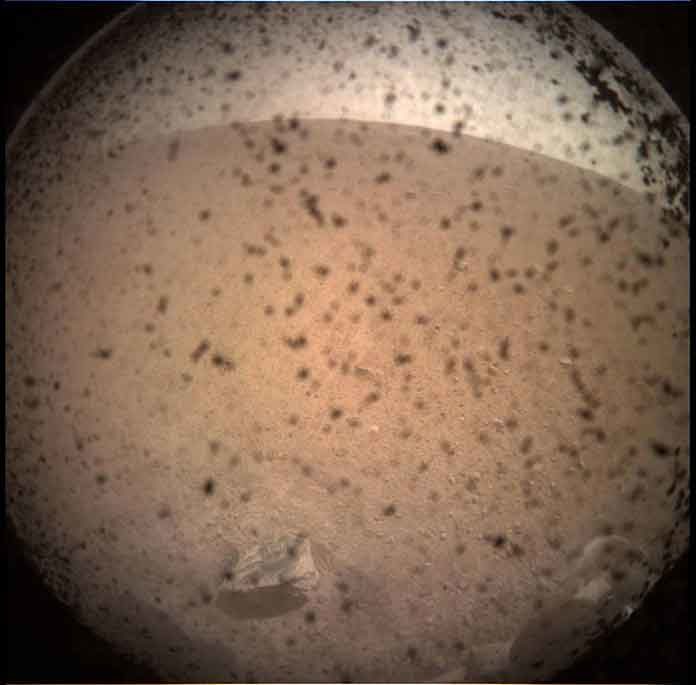NASA’s Interior Exploration using Seismic Investigations, Geodesy, and Heat Transport (InSight) has recently landed on Mars.
InSight launched from Vandenberg Air Force Base in California May 5. The lander touched down Monday, Nov. 26, near Mars’ equator on the western side of a flat, smooth expanse of lava called Elysium Planitia, with a signal affirming a completed landing sequence at approximately noon PST (3 p.m. EST).
NASA Administrator Jim Bridenstine said, “Today, we successfully landed on Mars for the eighth time in human history. InSight will study the interior of Mars and will teach us valuable science as we prepare to send astronauts to the Moon and later to Mars. This accomplishment represents the ingenuity of America and our international partners and it serves as a testament to the dedication and perseverance of our team. The best of NASA is yet to come, and it is coming soon.”

Credits: NASA/Bill Ingalls
The landing signal was handed-off to NASA’s Jet Propulsion Laboratory (JPL) in Pasadena, California, by means of one of NASA’s two small exploratory Mars Cube One (MarCO) CubeSats, which propelled on the same rocket from InSight and pursued the lander to Mars.
They are the primary CubeSats sent into profound space. After effectively completing various correspondences and in-flight route tests, the twin MarCOs were set in position to get transmissions amid InSight’s entrance, plunge, and landing.
InSight project manager Tom Hoffman at JPL said, “We hit the Martian atmosphere at 12,300 mph (19,800 kilometers per hour), and the whole sequence to touching down on the surface took only six-and-a-half minutes. During that short span of time, InSight had to autonomously perform dozens of operations and do them flawlessly — and by all indications that is exactly what our spacecraft did.”
InSight’s surface-operations phase started one after a successful landing. One of its first tasks is to deploy its two decagonal solar arrays, which will provide power. That process begins 16 minutes after landing and takes another 16 minutes to complete.
Moreover, the spacecraft will start gathering science data after 1 week. At least two days after touchdown, the engineering team will begin to deploy InSight’s 5.9-foot-long (1.8-meter-long) robotic arm so that it can take images of the landscape.
InSight principal investigator Bruce Banerdt of JPL said, “Landing was thrilling, but I’m looking forward to the drilling. When the first images come down, our engineering and science teams will hit the ground running, beginning to plan where to deploy our science instruments.”
“Within two or three months, the arm will deploy the mission’s main science instruments, the Seismic Experiment for Interior Structure (SEIS) and Heat Flow and Physical Properties Package (HP3) instruments.”
InSight will operate on the surface for one Martian year, plus 40 Martian days, or sols, until Nov. 24, 2020. The mission objectives of the two small MarCOs which relayed InSight’s telemetry was completed after their Martian flyby.
